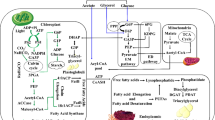Summary
Beside mere sequestration options for carbon dioxide, for example in geological formations, substantial efforts are made globally for CO2 recycling, i. e. the utilization of CO2 as feedstock for chemical and biological processes. In contrast to sequestration, the utilization of CO2 as feedstock may generate an added value which makes the whole process economically feasible. Typical chemical process paths are methanation, generation of synthesis gas, carbonation of mineral resources as well as direct reactions like photo-catalysis. Substantial research and development is done for the use of micro-algae as biological process path. It is necessary for the evaluation of all options to consider their total energy- and CO2-balance, the duration of carbon fixation as well as their fixation quantity potential. Some of the utilization paths are technically mature, like for example methanation, others, like photo-catalysis, are still subject of fundamental research. Generally, the fixation quantity potential of Carbon Capture and Utilization alone is not suitable for achieving the necessary CO2-mitigation targets. But some of the potential process paths for the utilization of CO2 promise to be economically and technically feasible. Most of the process paths need further research and development efforts, including the development of a method for the systematical evaluation of the ecological and economical aspects of the different options.
Zusammenfassung
Neben den reinen Speicheroptionen für CO2, beispielsweise in geologischen Formationen, werden weltweit erhebliche Anstrengungen zur Verwertung, also Nutzung von CO2 als Rohstoff für chemische und biologische Prozesse unternommen. Gegenüber den Speicheroptionen bietet die stoffliche Nutzung die Chance einer Wertschöpfung, die den gesamten Prozess wirtschaftlich selbsttragend machen kann. Als chemische Verwertungswege kommen dabei die Methanisierung, die Erzeugung von Synthesegas, die Karbonatisierung mineralischer Rohstoffe sowie die direkte Umsetzung, beispielsweise in photokatalytischen Reaktionen, in Frage. Im Bereich der biologischen Prozesse laufen derzeit eine Vielzahl von Untersuchungen zum Einsatz von Mikroalgen. Bei allen diesen Optionen ist es notwendig, eine ganzheitliche Betrachtung der Prozesse hinsichtlich ihrer Energie- und CO2-Bilanz, der Bindungslänge sowie des Mengenpotentials anzustellen. Während einzelne Verwertungswege technisch weit ausgereift sind, wie beispielsweise die Methanisierung, sind andere (z. B. Photokatalyse) noch im Bereich der Grundlagenforschung anzusiedeln. Grundsätzlich kann gezeigt werden, dass mit Carbon Capture and Utilization alleine die gesetzten CO2-Minderungsziele nicht erreicht werden können. Jedoch liefern einige Prozesse einen wirtschaftlich interessanten und technisch aussichtsreichen Weg zur stofflichen Verwertung von CO2. Für die meisten Verwertungswege sind noch weitere Forschungs- und Entwicklungsanstrengungen notwendig. Dazu gehört auch die Entwicklung einer Methode zur systematischen ökologischen und ökonomischen Gesamtbewertung der Verwertungsoptionen.
Similar content being viewed by others
Literatur
Ausfelder, F.; Bazzanella, A.: Verwertung und Speicherung von CO2. Diskussionspapier, Dechema e.V., Frankfurt/Main, Oktober 2008
Quadrelli, E.A.; Centi, G.; Duplan, J.L.; Perathoner, S.: Carbon Dioxide Recycling: Emerging Large-Scale Technologies with Industrial Potential. ChemSusChem 4, 2011, 1194–1215
Aresta, M. (Ed.): Carbon Dioxide as Chemical Feedstock. Wiley-VCH, Weinheim, 2010. ISBN 978–3-527-32475-0
Antrekowitsch, H. et al.: CCU – Carbon Capture and Utilization. Endbericht an das BMWFJ, Leoben, November 2011
Specht, M. et al.: Speicherung von Bioenergie und erneuerbaren Strom im Erdgasnetz. Erdöl Erdgas Kohle 10, 2010, 342–346
Sterner, M.: Bioenergy and renewable power methane in integrated 100 % renewable energy systems. Dissertation, Universität Kassel, 2009. ISBN 978–3-89958-798-2
Zevenhoven, R., Fagerlund, J., Songok, J.K.: CO2 mineral sequestration: developments towards large-scale application. Greenhouse Gas Science and Technology 1, 2011, 48–57
Zevenhoven, R., Fagerlund, J.: Fixation of Carbon Dioxide into Inorganic Carbonates: The Natural and Artificial "Weathering of Silicates". In: Aresta, M. (Ed.): Carbon Dioxide as Chemical Feedstock. Wiley-VCH, Weinheim, 2010. ISBN 978-3-527-32475-0. 353–379
Peters, M.; Köhler, B.; Kuckshinrichs, W.; Leitner, W.; Markewitz, P.; Müller, T.E.: Chemical Technologies for Exploiting and Recycling Carbon Dioxide into the Value Chain. ChemSusChem 4, 2011, 1216–1240
Anonym: Algae – The Future for Bioenergy? Summary and conclusions from the IEA Bioenergy ExCo64-Workshop. IAE Bioenergy ExCo:2010:02, 2010
ForschungsVerbundErneuerbareEnergien (FVEE) (Hrsg.): Energiekonzept 2050 – Eine Vision für ein nachhaltiges Energiekonzept auf Basis von Energieeffizienz und 100 % erneuerbaren Energien, 2010. www.fvee.de/fileadmin/politik/10.06.vision_fuer_nachhaltiges_energiekonzept.pdf Stand 07.07.2011
Kopyscinski, J. et al: Production of synthetic natural gas (SNG) from coal and dry biomass – A technology review from 1950 to 2009. Fuel 89, 2010, 1763–1783
Rönsch, S., Ortwein, A.: Methanisierung von Synthesegasen – Grundlagen und Verfahrensentwicklungen. Chemie Ingenieur Technik 83, 2011, 1200–1208
Fraunhofer Institut für Windenergie und Energiesystemtechnik (IWES) (Hrsg.): Energiewirtschaftliche und ökologische Bewertung eines Windgas-Angebotes. Kassel, 2011
Krevor, S.C.; Graves, C.R.; Van Gosen, B.S.; McCafferty, A.E.: Mapping the mineral resource base for mineral carbon-dioxide sequestration in the conterminous United States. U.S. Geological Survey Digital Series 414, 2009. http://pubs.usgs.gov/ds/414 (Stand 06.01.2012)
Intergovernmental Panel on Climate Change (IPCC): Special Report on Carbon Dioxide Capture and Storage. Cambridge University Press, Cambridge 2005, 442pp
Wagner, V.: Titandioxid Photokatalysatoren. Future Technologies Update Nr.1, Zukünftige Technologien Consulting (ZTC), VDI Technologiezentrum, Düsseldorf, 2006, 6–8
DNV, Carbon Dioxide Utilization: Electrochemical Conversion of CO2 – Opportunities and Challenges Research and Innovation, Position Paper 07–2011
Huijgen, W.J.J.: Carbon dioxide sequestration by mineral carbonation, PhD Thesis, Energy research Centre of the Netherlands, 2007
Norsker, N.H.; Barbosa, M.J.; Vermue, M.H.; Wijffels R.H.: Microalgal production – A close look at the economics, Biotechnol. Adv. 29, 2010, 24–27
Slegers, P.M.; Wijffels, R.H.; van Straten, G.; van Boxtel, A.J.B.: Design scenarios for flat panel photobioreactors. Applied Energy, Volume 88, Issue 10, 2011, 3342–3353
Author information
Authors and Affiliations
Corresponding author
Rights and permissions
About this article
Cite this article
Lehner, M., Ellersdorfer, M., Treimer, R. et al. Carbon Capture and Utilization (CCU) – Verfahrenswege und deren Bewertung. Berg Huettenmaenn Monatsh 157, 63–69 (2012). https://doi.org/10.1007/s00501-012-0056-1
Received:
Accepted:
Issue Date:
DOI: https://doi.org/10.1007/s00501-012-0056-1




